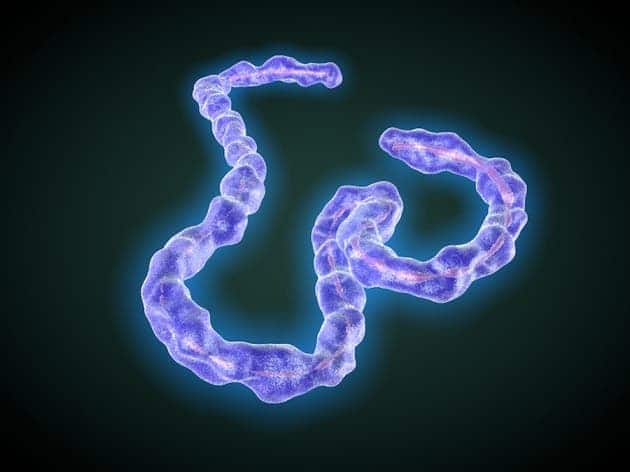A medicine administered even up to 3 days after infection can save monkeys from the Marburg virus – an incredibly dangerous pathogen closely related to Ebola.

The Marburg virus causes a lethal haemorrhagic fever. Credits: C. Bickel/Science Translational Medicine
“This clearly starts to move into the realm of being a therapy, rather than a post-exposure treatment,” says virologist Gene Olinger, principal science adviser for contract-research organization MRIGlobal in Kansas City, Missouri, who was not involved in the study. “It’s a tougher point to intervene, so it’s important that they’ve demonstrated this.”
Marburg virs (MARV) is a hemorrhagic fever virus. It’s one of the most dangerous viruses on the face of the Earth, causing severe symptoms in a very short time in humans and nonhuman primates. The Soviet Union had an extensive offensive and defensive biological weapons program that included MARV, with at least three Soviet research institutes having MARV research programs during offensive times. It’s unclear how effective their research was, but all the labs continued their research after the USSR collapsed. The reason why the Russians were (hopefully, ‘were’ – and not ‘are’) researching Marburg as a weapon is because it is highly lethal. Fatality rates are not clear, ranging between 23 and almost 100 percent; an outbreak in Angola in 2004–05 killed more than 90% of people infected, and the virus is circulating in countries affected by the current Ebola outbreak, such as Sierra Leone. It is also closely related to the Ebola virus, so plenty of reason to study it.
The drug, called TKM-Marburg, was developed by pharmaceutical company Tekmira in Burnaby, Canada. It was tested on 16 rhesus macaques (Macaca mulatta), divided into four groups that each received the treatment at a different time: 30–45 minutes after infection, or one, two or three days after infection. All of them survived the infection, while none of the untreated monkeys survived (4 monkeys). Personally, I strongly feel that we should raise the ethical aspect of having this kind of study, but you can’t deny their utility, and this is not the post of this article.
The TKM-Marburg research “shows that you have a window of opportunity when you can actually intervene before the tipping point when people are going to be too ill to recover”, says Amesh Adalja, an infectious-disease physician at the University of Pittsburgh Medical Center in Pennsylvania. This is the first time a drug has been proven to be efficient against it after more than a day. The good thing is that they are already contacting NGOs and health organizations in countries where the Marburg virus still roams, to give it to people in the (pretty good chance) that it will also work on humans. The main problem is (you’ve guessed it) lack of funding.
It’s also noteworthy that the drug protects against several strains of the Marburg virus – this is one of the big problems in treating hemorrhagic viruses, that you have to take into account the several strains in which they may appear.









